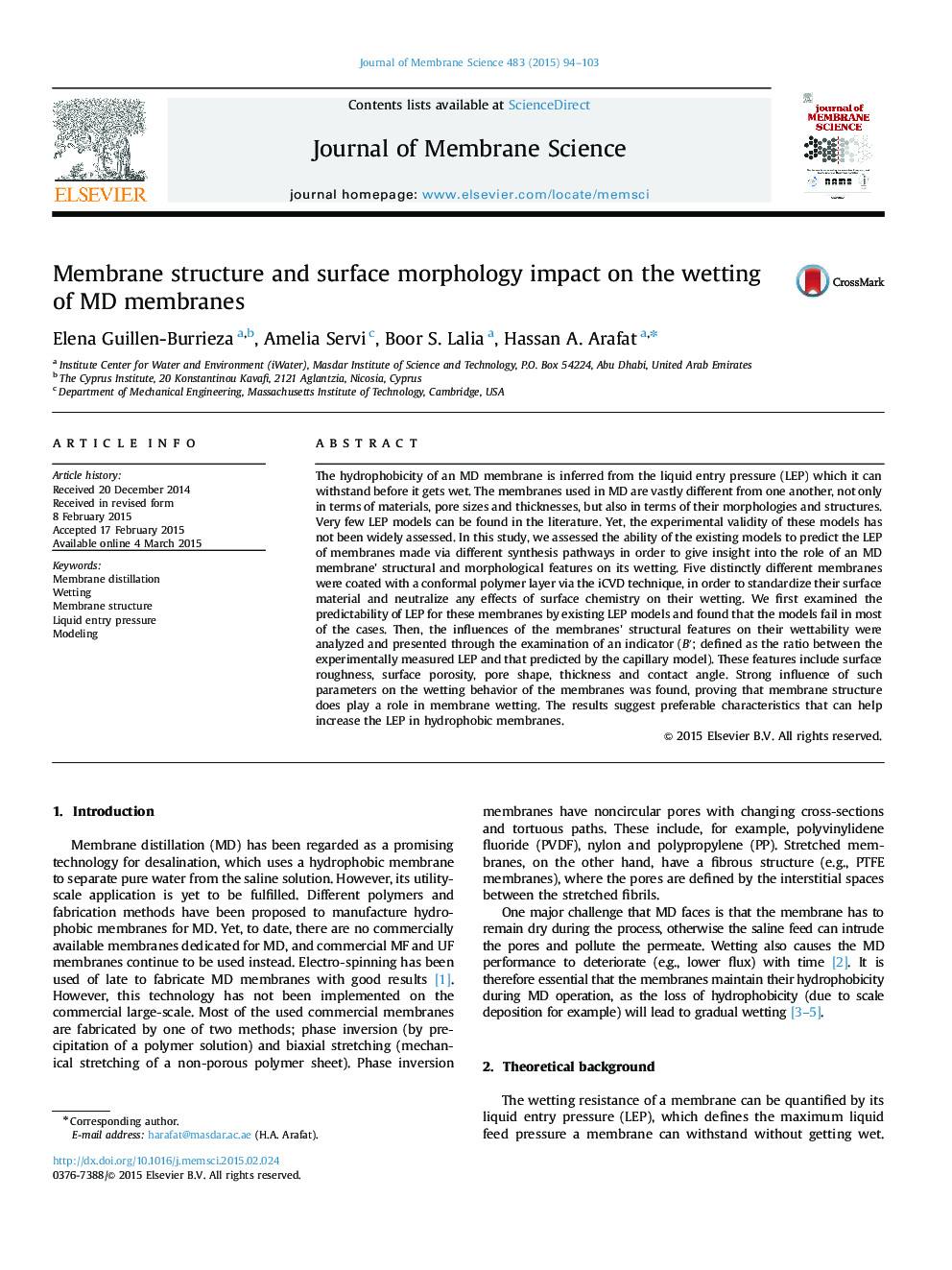| Article ID | Journal | Published Year | Pages | File Type |
|---|---|---|---|---|
| 633066 | Journal of Membrane Science | 2015 | 10 Pages |
Abstract
The hydrophobicity of an MD membrane is inferred from the liquid entry pressure (LEP) which it can withstand before it gets wet. The membranes used in MD are vastly different from one another, not only in terms of materials, pore sizes and thicknesses, but also in terms of their morphologies and structures. Very few LEP models can be found in the literature. Yet, the experimental validity of these models has not been widely assessed. In this study, we assessed the ability of the existing models to predict the LEP of membranes made via different synthesis pathways in order to give insight into the role of an MD membrane׳ structural and morphological features on its wetting. Five distinctly different membranes were coated with a conformal polymer layer via the iCVD technique, in order to standardize their surface material and neutralize any effects of surface chemistry on their wetting. We first examined the predictability of LEP for these membranes by existing LEP models and found that the models fail in most of the cases. Then, the influences of the membranes׳ structural features on their wettability were analyzed and presented through the examination of an indicator (Bâ²; defined as the ratio between the experimentally measured LEP and that predicted by the capillary model). These features include surface roughness, surface porosity, pore shape, thickness and contact angle. Strong influence of such parameters on the wetting behavior of the membranes was found, proving that membrane structure does play a role in membrane wetting. The results suggest preferable characteristics that can help increase the LEP in hydrophobic membranes.
Related Topics
Physical Sciences and Engineering
Chemical Engineering
Filtration and Separation
Authors
Elena Guillen-Burrieza, Amelia Servi, Boor S. Lalia, Hassan A. Arafat,
